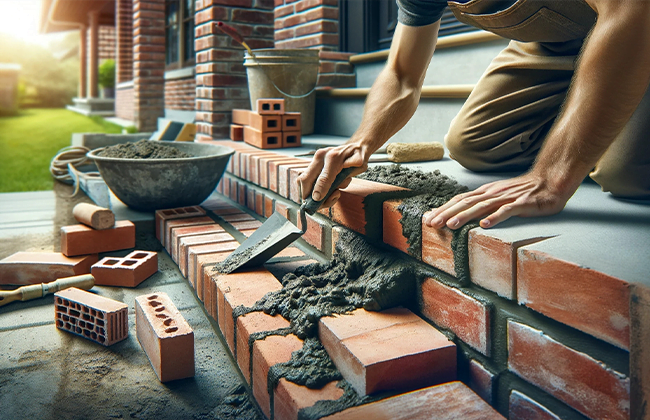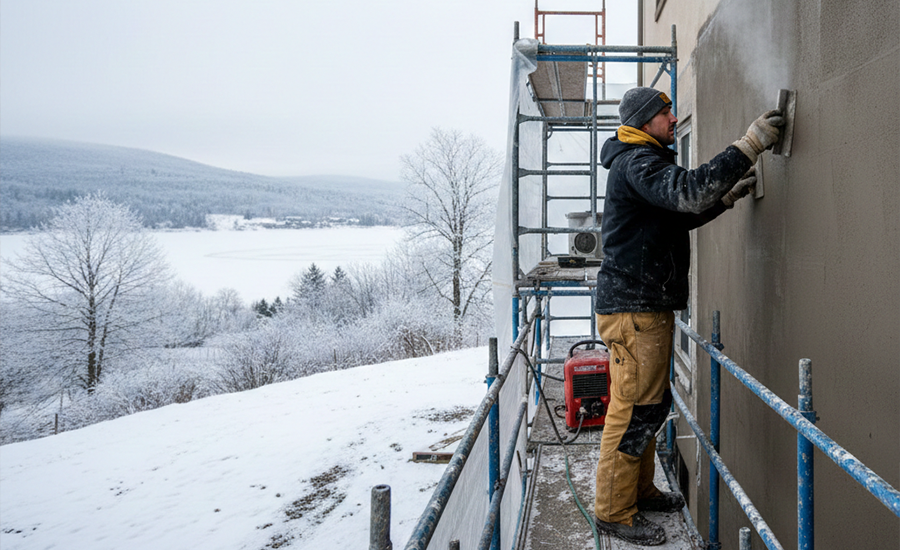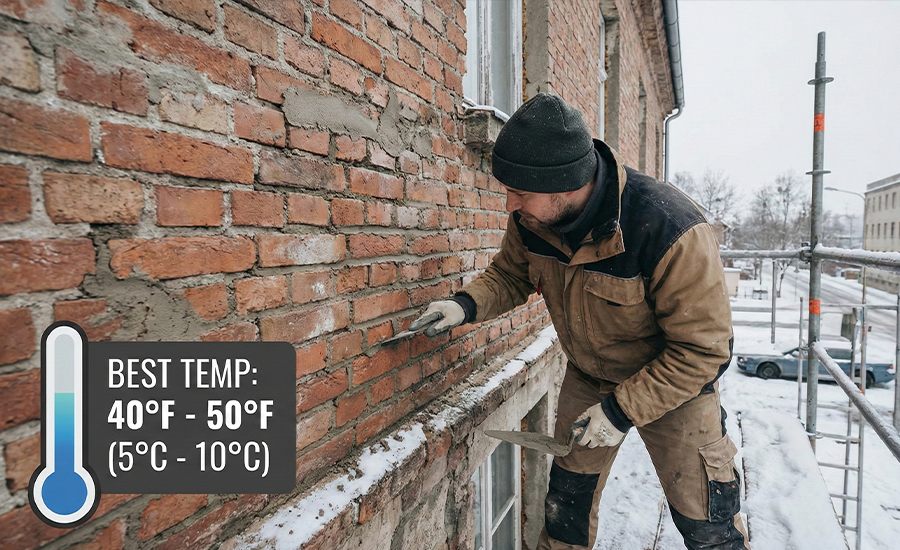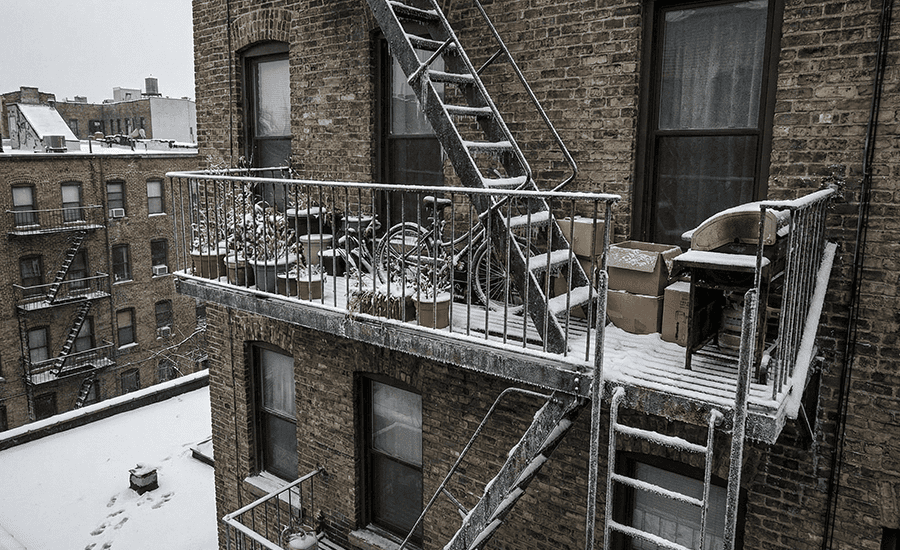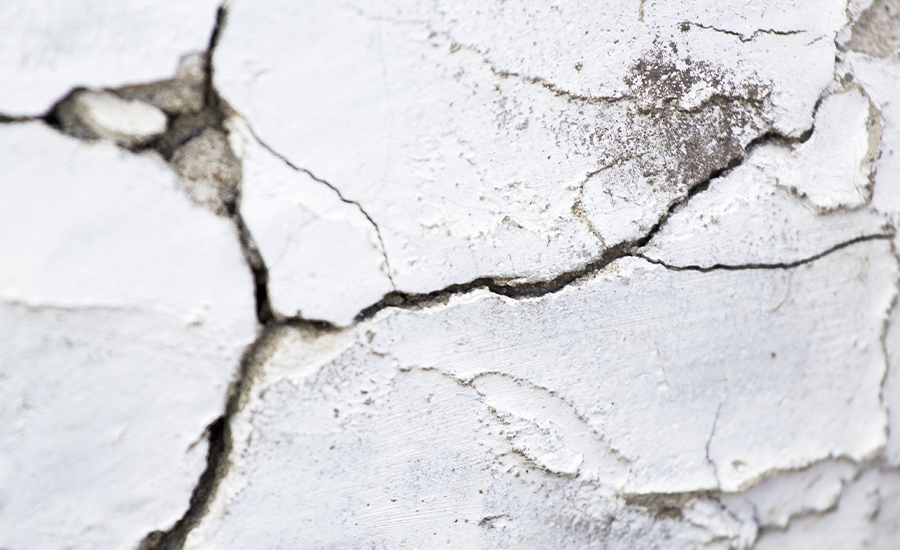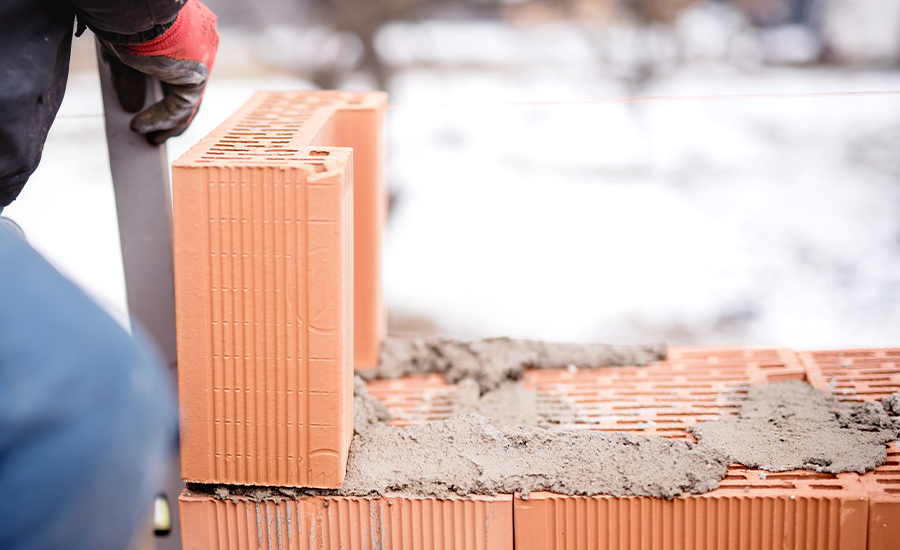Thinking about the cost to repair brick steps at your home? It’s a common concern for many homeowners. Whether it’s wear and tear over time or sudden damage, brick steps need regular attention to maintain both their aesthetics and functionality. This article delves into the various elements that influence the cost to repair brick steps, providing homeowners with a comprehensive understanding of what to expect in terms of expenses. From materials to labor and from complexity to additional charges, we’ll cover it all to help you make informed decisions.
Cost to Repair Brick Steps: An Essential Overview
Let’s start at the beginning: Why do brick steps need repairs, and what does it involve? We’re breaking down the basics to get you up to speed.
Why Repair? Understanding the Cost to Repair Brick Steps
Brick steps are more than just a functional part of our homes; they contribute significantly to the overall aesthetic and curb appeal. But, like anything else, they’re prone to wear and tear. Repairing brick steps is not just about fixing a visual eyesore; it’s essential for safety and preserving the integrity of your property. Over time, weather elements, foot traffic, and natural settling can cause bricks to crack, become loose, or even disintegrate. Ignoring these issues not only worsens the damage but also leads to higher repair costs in the long run. So, let’s break down why keeping your brick steps in tip-top shape is vital for every homeowner.
Longevity of Brick Steps and Repair Costs
Now, you might wonder, “What exactly affects the lifespan of my brick steps?” Well, several factors come into play:
- Quality of Materials: The type of bricks and mortar used initially can drastically impact how long your steps last. Higher quality materials may cost more upfront but often withstand the test of time better.
- Exposure to Elements: Weather plays a big role. Rain, snow, extreme temperatures – they all take a toll. Areas with harsher climates typically see more rapid deterioration.
- Usage: The more foot traffic your steps get, the quicker they may wear down. This is especially true for steps leading to public or frequently used entrances.
- Installation Quality: How well your steps were installed initially is a huge factor. Poor craftsmanship can lead to early repairs.
- Maintenance Routine: Regularly checking and maintaining your steps can extend their lifespan. Simple acts like cleaning off debris and checking for loose bricks can make a difference.
Understanding these factors not only helps in maintaining your steps but also gives you insight into what to expect when it’s time for repairs. Next up, we’ll dive into the specifics of what goes into the cost of repairing these essential parts of our homes. Stay tuned!
Breaking Down the Cost to Repair Brick Steps
Now, let’s talk about money. We’ll explore what factors into the cost of repairing brick steps – from materials to labor, and everything in between.
Material Costs: Types of Bricks and Mortar
Let’s start with the basics: the materials. Not all bricks and mortar are created equal. You’ve got your standard red bricks, which are pretty common and affordable. Then there are the higher-end options like firebricks or antique bricks, which can add a unique look but at a higher price. Mortar, too, varies. There’s traditional cement mortar, and then you have lime mortar, which is often used in older homes. It’s like choosing between a regular coffee and a fancy latte – both do the job, but one might fit your style (and budget) better. The choice of materials directly affects your wallet, so it’s important to balance aesthetics and durability with cost.
Labor Costs: Skilled Masonry Work
Now, onto labor costs. Repairing brick steps isn’t your average DIY project; it requires skilled hands. A professional mason knows how to remove damaged bricks, prepare the base, lay the new bricks, and ensure everything is level and sturdy. Think of it like going to a seasoned chef for a gourmet meal. The expertise and experience of a skilled mason ensure your steps are safe and last longer, but this expertise comes at a cost. Depending on where you live, the complexity of the work, and how quickly you need the job done, labor costs can vary significantly.
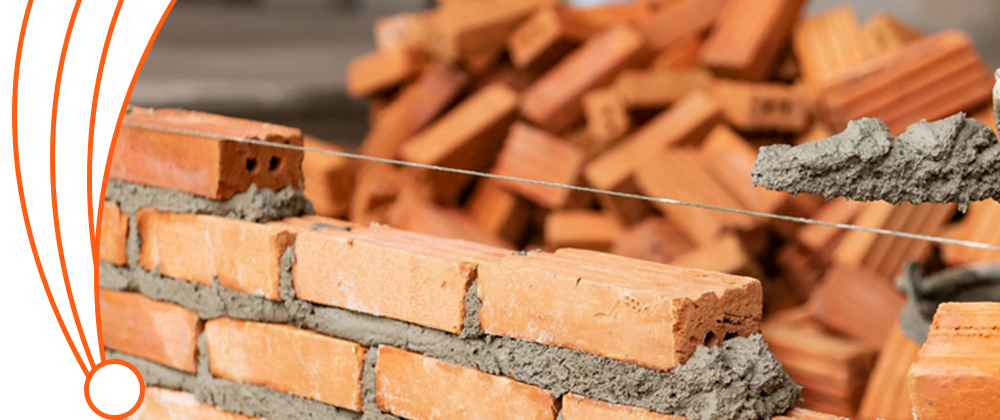
Complexity of Repair: Size, Design, and Extent of Damage
Finally, the complexity of the repair plays a huge part in determining the cost. It’s like solving a puzzle – some are simple, while others are like those 1000-piece nightmares. Simple repairs, like replacing a few loose bricks, are relatively straightforward and less expensive. But if your steps are old, have a unique design, or have significant damage, the repair work becomes more complex and, consequently, more costly. The size of the steps matters too. Small porch steps? Less material and labor. Grand entrance steps? More materials, more time, more money.
So, when you’re budgeting for those brick step repairs, remember it’s not just about slapping on some new bricks. It’s a blend of the right materials, skilled work, and the scale and complexity of the job. Keep these factors in mind, and you’ll be better prepared to tackle those repairs without any nasty surprises!
Estimated Cost Table for Brick Step Repair:
| Cost Component | Description | Estimated Cost Range (USD) |
| Materials | Bricks (per 1,000 units) and mortar | $300 – $800 |
| Labor | Cost per hour for skilled masonry work | $50 – $75 per hour |
| Repair Complexity | Basic repair to complete rebuild | Adds 15% – 50% to total cost |
| Additional Expenses | Tools, equipment rental, waste disposal | $50 – $200 |
Key Points to Note:
- Materials: Costs vary based on the type of bricks (new, reclaimed, special finishes) and mortar quality.
- Labor: Skilled masons may charge based on the complexity and urgency of the job.
- Repair Complexity: Extensive damage or intricate step designs will add to the overall cost.
- Additional Expenses: Tools or equipment not commonly owned by homeowners, such as cement mixers or scaffolding, may need to be rented.
This table offers a rough guide to help budget for brick step repairs. For precise estimates, local quotes are always recommended, as costs can vary significantly based on location and specific repair circumstances.
Step-by-Step Guide to Brick Step Repair Process
Ready to dive into the repair process? Here’s a straightforward, step-by-step guide to fixing those brick steps, whether you’re a DIY enthusiast or just curious.
Initial Assessment and Planning
First things first, let’s not jump in without a plan. Assessing the damage is like being a detective – you need to figure out the extent of the problem before you can fix it. Check out the steps: Are the bricks loose? Cracked? Missing altogether? How’s the mortar holding up? Once you’ve got a good idea of the damage, it’s planning time. Think about the materials and tools you’ll need, and decide whether it’s a DIY job or if you need to call in the pros. Planning ahead helps avoid mid-project surprises, which can be both frustrating and costly.
Removing Damaged Bricks and Preparing the Surface
Next up, it’s time to roll up your sleeves. Removing damaged bricks can be a bit tricky. You’ll need tools like a chisel and hammer to carefully remove the bricks without damaging the good ones. It’s like removing a bad apple without bruising the others. Once the old bricks are out, you’ll need to clean up the area. Get rid of all the old mortar and debris to make a nice, clean surface for the new bricks. This step is crucial because a clean base means a stronger bond for your new bricks.
Laying New Bricks and Mortar
Now, the fun part – laying the new bricks. Mix your mortar, following the instructions to a T. It’s like baking; the right consistency is key. Lay the mortar on the base, then place your bricks, leaving enough space between them for the mortar joints. Be sure to keep checking that everything is level. This step requires patience and precision – it’s like putting together a puzzle, but one where the pieces need to be perfectly aligned.
Finishing Touches and Curing Time
Almost done! Once all the bricks are in place, fill in the joints with more mortar. Smooth it out for a neat finish. Then, the waiting game begins – the curing time. This can take several days, depending on the weather and the type of mortar you used. It’s like waiting for paint to dry – not the most exciting, but necessary. During this time, keep your newly repaired steps free from traffic. Rushing this step can compromise the integrity of your repair job. Patience pays off in the end.
And there you have it – a step-by-step guide to repairing those brick steps. It might sound like a lot, but with careful planning, the right tools, and a bit of elbow grease (or a call to a professional), your steps will be as good as new in no time. Remember, taking it one step at a time is the key!
DIY vs. Professional Repairs: Cost to Repair Brick Steps
DIY or call the pros? We’ll compare the costs and benefits of both approaches to help you make the best choice for your brick step repairs.
DIY Repair Approach: Pros, Cons, and Potential Savings
Let’s chat about DIY repairs first. It’s like cooking at home instead of dining out – you can save money, but it does require certain skills and effort. The big advantage? Cost savings. You’re not paying for labor, just materials. Plus, there’s the satisfaction of fixing it yourself. But, there’s a catch. Without the right skills and tools, you could end up making things worse, leading to more costs down the line. It’s a bit like trying to bake a cake without a recipe – if you know what you’re doing, great; if not, well, you might end up with a mess.
Hiring Professionals: When and Why It’s Worth the Cost
Now, bringing in the pros. Think of this as hiring a chef to ensure your dinner party is a hit. Yes, it costs more, but the expertise and quality are worth it. Professional masons bring experience, tools, and knowledge of building codes. They can tackle complex issues and get the job done right the first time. When should you hire one? If the repair is extensive, involves structural issues, or if you’re not confident in your DIY skills, it’s best to call in the experts. It’s like needing surgery – you want a skilled surgeon, not a DIY approach.

Case Studies: Cost Implications of Both Approaches
Consider this scenario: a homeowner decides to repair their steps DIY-style. They spend $200 on materials but end up causing more damage. Eventually, they hire a professional, spending an additional $800. Total cost: $1000. Another homeowner goes straight for professional help, paying $700 right off the bat. The first homeowner saved upfront but ended up paying more in the long run.
Long-Term Benefits and Cost Savings in Repairing Brick Steps

Investing in quality repairs can save you cash in the long run. Let’s explore how proper maintenance and repairs add value and safety to your home.
Preventative Maintenance and Its Impact on Repair Costs
Preventative maintenance is the unsung hero in saving repair costs. It’s like regular dental check-ups to avoid cavities. Regularly cleaning your steps, filling small cracks, and ensuring good drainage can prevent major repairs later. Small, consistent care can extend the life of your steps and keep costs down in the long run.
Value Addition to Property Through Aesthetic Improvements
Don’t underestimate the power of curb appeal. Well-maintained brick steps can significantly enhance your home’s look, potentially increasing its value. It’s like giving your house a facelift. This isn’t just about looks; it’s an investment in your property’s value.
Safety Considerations and Avoiding Future Expenses
Lastly, let’s talk about safety. Damaged steps can be a hazard. Fixing them promptly and properly is crucial to avoid accidents – think of it as an investment in safety. By addressing issues early and ensuring quality repairs, you’re also sidestepping potential future expenses from accidents or more extensive damages.
Choosing the Right Contractor: Cost to Repair Brick Steps
Selecting the right contractor is crucial. We’ll guide you through what to look for and the key questions to ask.
Criteria for Selecting a Skilled Contractor
Choosing the right contractor is a bit like picking the right mechanic for your car. You want someone skilled, trustworthy, and fair. Look for a contractor with a solid reputation – check out reviews and ask around in your community. Experience matters a lot too. A contractor who’s been in the business for years is likely to have dealt with a variety of brick step repairs. Also, check if they are licensed and insured – this is non-negotiable. It’s like a safety net that protects both you and the contractor.
Questions to Ask Before Hiring
Before you seal the deal, have a chat with your potential contractor. Ask questions like:
- “How many brick step repairs have you done?”
- “Can you provide references or photos of previous work?”
- “What’s the estimated time frame and cost for this project?”
- “How do you handle unexpected issues or additional costs?”
- “What warranty or guarantee do you offer on your work?”
Think of it as an interview. You’re not just hiring their hands; you’re hiring their expertise and reliability.
Ensuring Quality and Cost-Effective Services
To ensure you’re getting the best bang for your buck, don’t just go for the cheapest quote. Compare different contractors not just on price, but on value – what are you getting for your money? A slightly more expensive contractor who offers a comprehensive warranty and uses high-quality materials might be more cost-effective in the long run. It’s about striking that balance between quality and cost.
Financial Planning for the Cost to Repair Brick Steps
Budgeting for repairs doesn’t have to be a headache. Let’s walk through some smart financial planning tips to manage the costs of brick step repairs.
Budgeting for Repair Costs
Budgeting for brick step repairs is a bit like planning for a vacation – you need to know how much you’re willing to spend and what you’re spending on. Start by getting a few quotes to understand the market rate. Then, set aside a budget that covers the cost of repair plus a little extra for unforeseen expenses – because let’s face it, surprises happen.
Exploring Financing Options
If the repair is urgent and the budget is tight, consider financing options. Some contractors offer payment plans, or you could look into home improvement loans or even a home equity line of credit if the repair is extensive. Think of this as an investment in your home – it’s important to find a financing option that fits your financial situation without putting undue strain on your budget.
Cost-Saving Tips Without Compromising on Quality
Lastly, here are some tips to keep costs down without sacrificing quality:
- Get multiple quotes and compare.
- Consider scheduling repairs during off-peak seasons; some contractors offer discounts during slower periods.
- If feasible, do some prep work yourself, like clearing the area around the steps.
- Don’t skimp on materials. Choosing slightly more expensive, high-quality materials now can save you money on future repairs.
Remember, good financial planning for brick step repairs is about making informed decisions that balance cost, quality, and long-term benefits. By being proactive and thoughtful in your approach, you can manage these repairs without breaking the bank.
Maintenance Tips: Minimizing the Cost to Repair Brick Steps
A little upkeep goes a long way. Here are some simple maintenance tips to extend the life of your brick steps and keep them looking great.
Regular Cleaning and Inspections
Think of your brick steps like a garden – regular care keeps them looking their best. Give them a good sweep every now and then to remove debris. Every few months, get a bit more thorough and wash them down. This isn’t just about keeping them pretty; it helps you spot any potential problems early on. And while you’re at it, do a quick inspection. Look out for cracks, loose bricks, or crumbling mortar. Catching these early can save you a lot in the long run.

Addressing Minor Issues Promptly
If you do find small issues, don’t wait for them to become big problems. It’s like a leaky faucet; ignore it, and you might end up with a bigger mess. Fixing a loose brick or filling a small crack as soon as you notice it can prevent more extensive (and expensive) repairs later.
Seasonal Care for Brick Steps
Your steps face different challenges with each season. In winter, be cautious with de-icing salts – they can be harsh on brick and mortar. Spring is a great time for a thorough cleaning after the winter grime. Summer heat can dry out and crack mortar, so keep an eye on that. And in autumn, keep those falling leaves swept away to prevent moisture traps. Seasonal care keeps your steps ready to face the year-round elements.
Maintenance Schedule Table:
| Frequency | Maintenance Task | Details |
| Monthly | Cleaning | Sweep to remove debris. |
| Quarterly | Inspection & Minor Repairs | Check and fix small cracks, loose bricks. |
| Annually | Thorough Cleaning and Inspection | Deep clean and inspect for structural issues. |
| Seasonal | Season-specific Care | Adjust care based on weather conditions. |
Legal Aspects: Understanding the Cost to Repair Brick Steps
Navigating the legal side: We’ll cover the essential building codes, permits, and insurance considerations you need to know for brick step repair.
Understanding Building Codes and Permits
Now, let’s talk about the less fun, but super important stuff – legalities. Depending on where you live, repairing your brick steps might require a permit, especially if it’s a major repair that could affect the structure of your home. It’s like traffic rules; they might be a hassle, but they’re there for safety. Check with your local building department to understand what’s required. Ignoring these regulations can lead to fines, and even worse, unsafe repairs.
Insurance Considerations in Brick Step Repair
And then there’s insurance. If you’re using a contractor, make sure they’re insured – this protects you if something goes wrong during the repair. If you’re doing it yourself, check how it might affect your home insurance. Some policies are pretty strict about DIY repairs, especially structural ones. It’s like wearing a seatbelt; it might not always seem necessary, but it’s there for your protection.
So, there you have it – a quick guide on maintaining your brick steps and navigating the legal side of repairs. Keep your steps clean, take care of small issues quickly, tailor your care to each season, and stay on top of legal and insurance matters. This way, your steps stay safe, sound, and looking sharp for years to come.
Legal and Compliance Table:
| Repair Type | Permit Requirement | Insurance Considerations |
| Minor (e.g., filling cracks) | Usually not required | Check policy for DIY repair coverage |
| Major (e.g., structural repair) | Often required | Contractor insurance needed; check home policy |
Conclusion:
As we wrap up, it’s clear that the cost to repair brick steps can vary based on several factors. Understanding these costs is crucial for effective budgeting and planning. Whether you opt for a DIY approach or hire a professional, the goal is to ensure your brick steps are safe, sturdy, and visually appealing. Remember, investing in timely repairs can prevent more significant expenses down the road. We hope this guide has been helpful in shedding light on the cost to repair brick steps and assists you in maintaining the beauty and safety of your home.
FAQs:
Q: What is the average cost to repair brick steps?
A: The average cost to repair brick steps varies, typically ranging between $500 to $1,500. This depends on factors like the extent of damage, material costs, and labor charges. It’s advisable to get multiple quotes for a clearer idea.
Q: How often should brick steps be inspected for repairs?
A: Regular inspections, ideally once a year, are recommended for brick steps. This helps in identifying any issues early on, potentially reducing the cost to repair brick steps by catching problems before they worsen.
Q: Can I reduce the cost to repair brick steps by doing it myself?
A: DIY can reduce your expenses, particularly in labor costs. However, it requires the right skills and tools. Inaccurate repairs might increase costs in the long run, so assess your abilities realistically before starting.
Q: What factors increase the cost to repair brick steps?
A: Factors like using high-quality materials, complex designs, extensive damage, and hiring skilled professionals can increase the cost to repair brick steps. However, these can also ensure durability and safety.
Q: Does weather affect the cost to repair brick steps?
A: Yes, weather conditions can impact the cost. Harsher climates might lead to more frequent repairs, and certain weather conditions can also affect the types of materials and methods used in the repair process.



